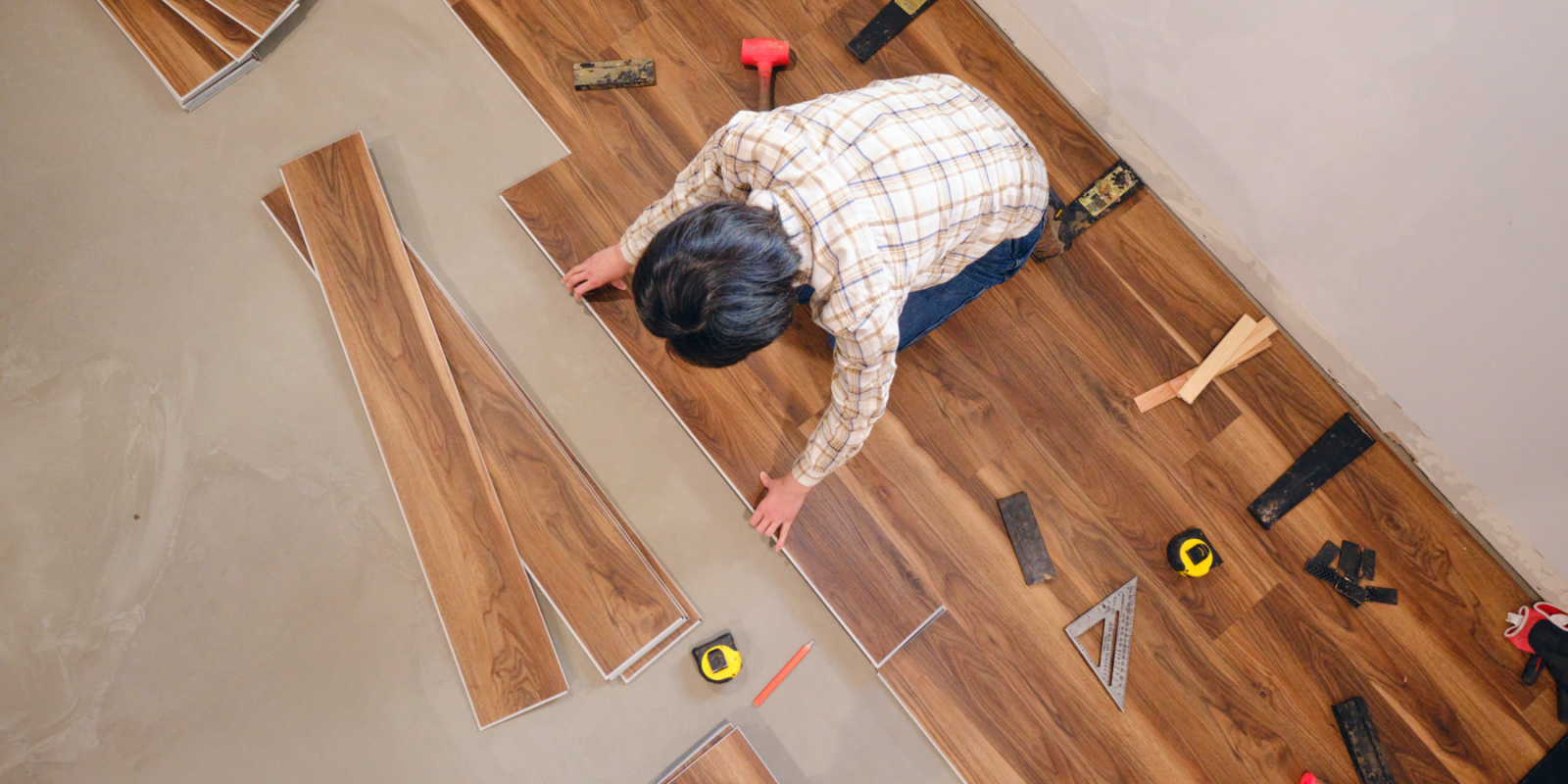Dangers of DIY Floor Installation

If you’ve ever considered installing flooring on your own, you may already know that the dangers of DIY floor installation far outweigh the benefits. Installing wood, vinyl, or laminate floors isn’t a project to take lightly — it’s complex, requires specialized tools, and requires a certain level of precision and skill. In other words, DIY hardwood floor installation can be a huge headache!
Listing the Dangers of DIY Floor Installation
DIY Can be More Costly
Do-it-yourself projects are often touted as a great way to save money; however, if you don’t know what you’re doing, taking on a flooring installation project yourself can end up costing you more in the long run. From incorrect measurements and damaging the floors during installation, to buying the wrong materials and tools, to even voiding your floor’s warranty, there are multiple ways you can quickly rack up costs with a DIY floor installation.
Time Is Not On Your Side
A big part of being a homeowner is managing your time. It’s easy to underestimate the amount of time it takes to install floors; however, many tasks related to the job can’t be rushed. A professional installer has the experience to get the job done right and in a fraction of the time. Instead of spending weeks upon weeks toiling away by yourself, why not leave it to the experts and have the job done in just a few hours or days?
Professionals Have Precision
Installing flooring can be extremely difficult and requires measuring with multiple levels of precision. If you’re new to flooring installation, it can be very difficult to get it right — especially with more complex floor patterns like herringbone or chevron. Going for a DIY project could leave you with a mismatched floor that isn’t quite level, is filled with gaps, or worse.
Neglected Subfloors
The dangers of DIY flooring projects include the potential of disregarding significant problems with the subfloor in and around the area being worked on. Subfloors are usually the most time-consuming component of a project and most DIYers tend to overlook them, assuming that they’re okay as-is. In reality, the condition of the subfloor can have a massive impact on the final result of your flooring installation. If the subfloor isn’t up to the necessary standards, your finished floor can be uneven and could eventually cause damage to the floors.
Unexpected Difficulties
It’s one thing to watch a few videos on “how-to” install a floor and quite another to actually experience it in real life. If you’ve never done floor installation before, you can run into some unexpected difficulties that could easily leave your DIY project stuck in limbo. This is especially true when it comes to problems with alignment, subfloor preparation, and expansion gaps. It’s not uncommon to finish a project only to find out that it looks crooked, uneven, or lopsided. Or worse, you might find yourself stuck with a floor that’s totally unfixable or requires costly repairs.
Dangers of DIY Floor Installation: Know the Risks
The dangers of DIY floor installation can far outweigh the potential rewards. A botched project can cost more time and money than it would to hire a professional. Plus, a professional installer can also provide you with expert advice, guidance on your flooring selection, a speedy installation, and more.
At the end of the day, entrusting your home’s floor installation to a licensed professional is worth the peace of mind. After all, you want to make sure your floor is properly installed and looks amazing for years to come!
Have any questions? Contact us here.
